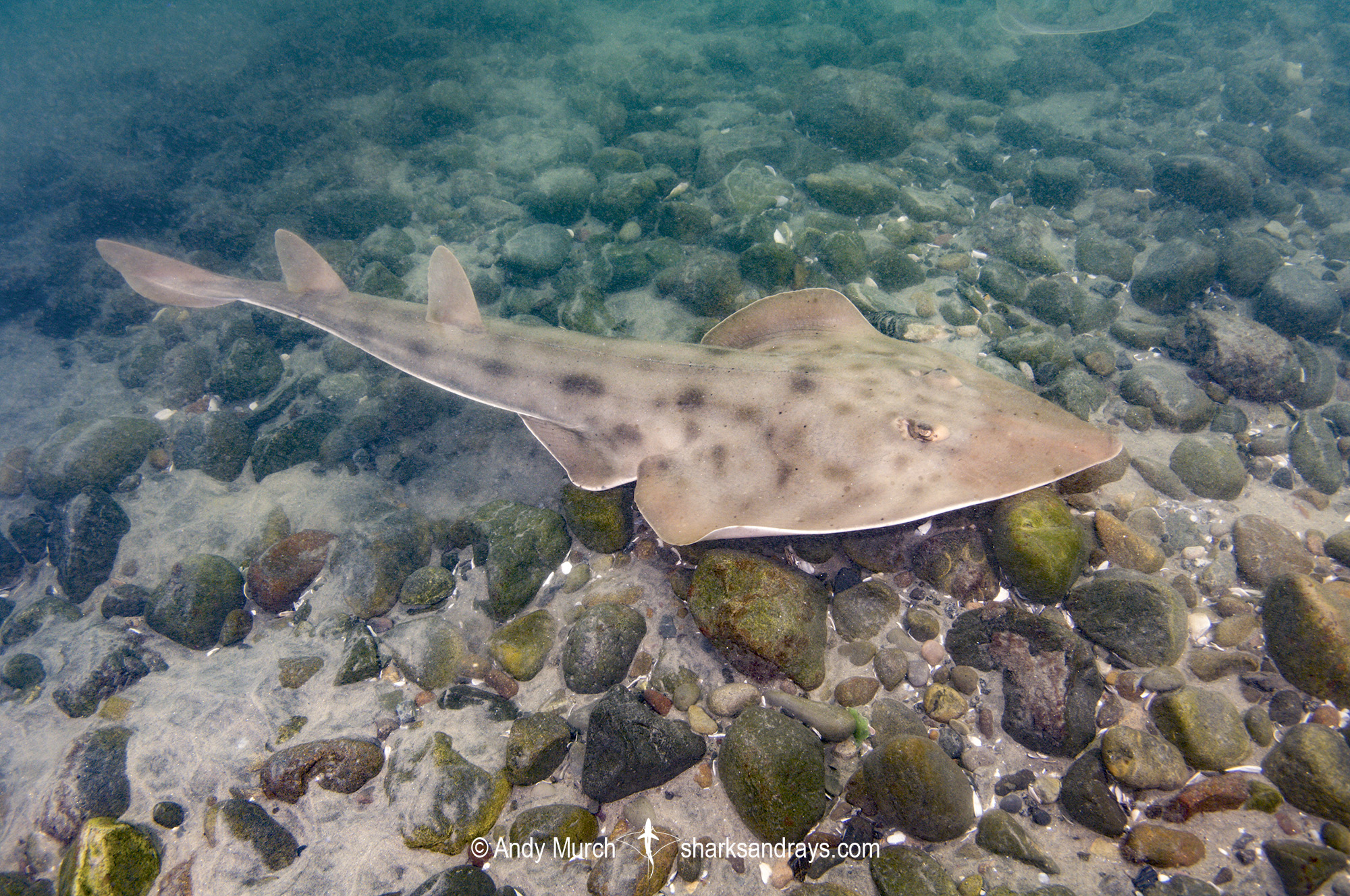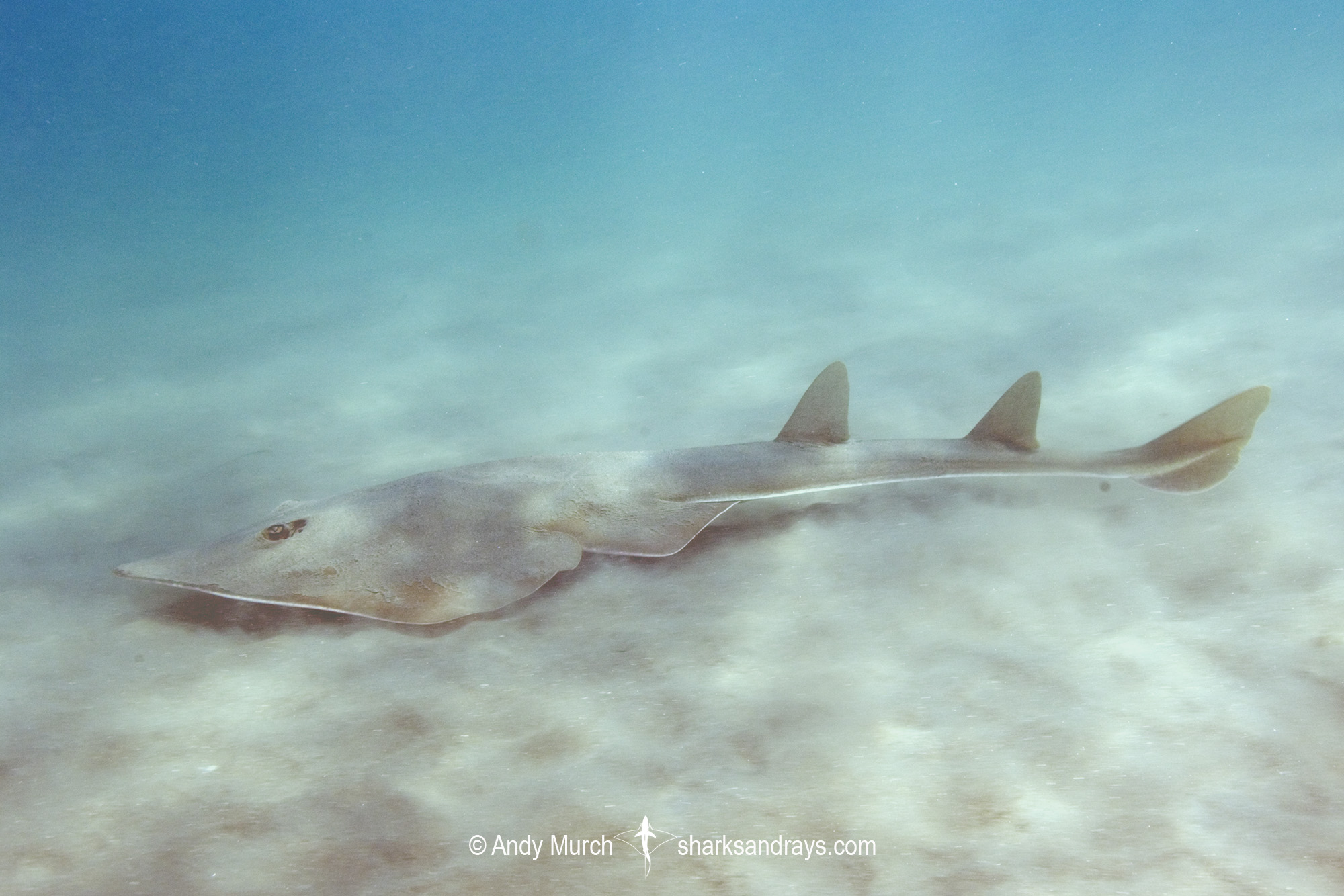Common names
Shovelnose Guitarfish.
Binomial
Pseudobatos productus.
Synonyms
Rhinobatis producta, Rhinobatos productus.
Identification
A very large guitarfish with a moderately long, wedge-shaped snout with an acutely pointed or narrowly rounded tip. Rostral ridges separated long most of their length but connected anteriorly, and sub-parallel; diverging slightly posteriorly. Eyes large. Snout length ~4.3 x orbit length. Spiracles with 2 skin folds on posterior margin; outer fold larger than inner. Nostrils large, positioned obliquely. Nasal curtain absent. Anterior nasal flaps extend over nostril opening but not beyond.
Anterior margins of disc straight. Pectoral apices broadly rounded. Skin completely covered in small denticles. Small thorns on rostral ridge, around orbits and above spiracles, on shoulders, and along midline and tail.
Tail robust and long; 1.3-1.4 x disc length. Dorsal fins large and well separated, with acutely rounded apices. Caudal fin triangular, without a defined lower caudal lobe, upper tip acute.
Colour
Dorsum greyish-brown to yellow-brown, usually with diffuse, darker blotches. Rostral cartilage matches dorsal coloration and is relatively indistinct. Ventrum white. Tip of snout sometimes dusky.
Size
Maximum length 170cm. Size at birth 20-24cm.

Conservation Status
NEAR THREATENED
In Mexico, the shovelnose guitarfish is targeted in artisanal fisheries and is a retained bycatch in commercial trawl and gillnet fisheries. It is the most heavily targeted batoid in north Pacific Mexico. and has suffered heavy declines. In California, recreational fishing data indicates a decline of 74% over three generations.
Seasonal closures on elasmobranch fishing along the Mexican Pacific coast, may being slowing the shovelnose guitarfish’s decline, but fishing pressure remains intense at other times of year.
An overall decline of 30% is estimated in the past three decades.

Habitat
Tropical/temperate seas. Benthic in shallow coastal environments such as estuaries, sea grass beds, sandy bays, and in kelp forests. Intertidal to 90m.
Distribution
Eastern Pacific. The shovelnose guitarfish occurs from San Francisco Bay, California, southward to at least the southern Gulf of California, and possibly to southern Mexico.
Reproduction
Aplacental viviparous. Litter size up to 1-16 pups.
Diet
Feeds on crabs, worms, clams, and bony fishes.
Behavior
Shovelnose guitarfish form large aggregations in the surf zone off Southern California during the summer months.
Reaction to divers
Skittish. Difficult to approach when encountered on snorkel in the surf zone. More approachable when resting in the kelp forest.
Diving logistics
The shovelnose guitarfish is one of the most commonly encountered rays in the summer in southern California. A good place to look for them is directly off the beach near the Marine Room Restaurant in La Jolla. At this spot, waves of shovelnose rays and leopard sharks migrate inshore during the summer. They can be encountered in just a meter or two of water.
What’s new
View our full list of updates
Similar species
Pacific Guitarfish Distinguished by uniformly grey or brown dorsum, sometimes with a few scattered white spots.
Whitesnout Guitarfish Distinguished by lack of markings and very pale rostral cartilage.




